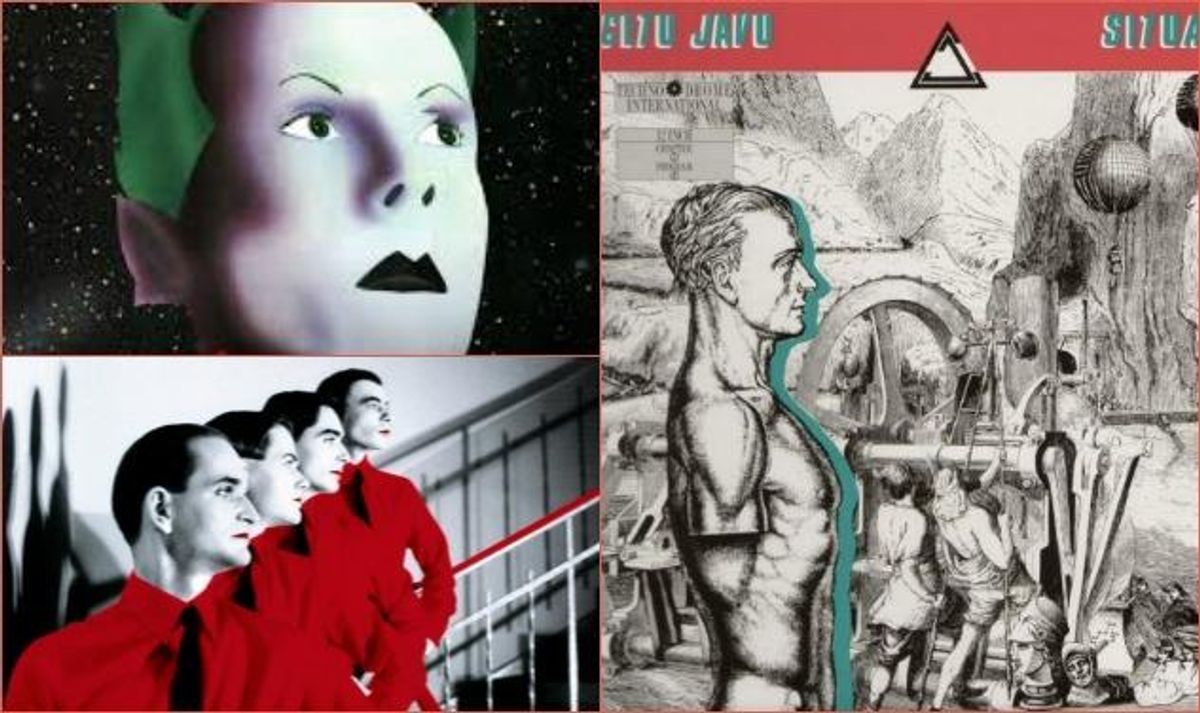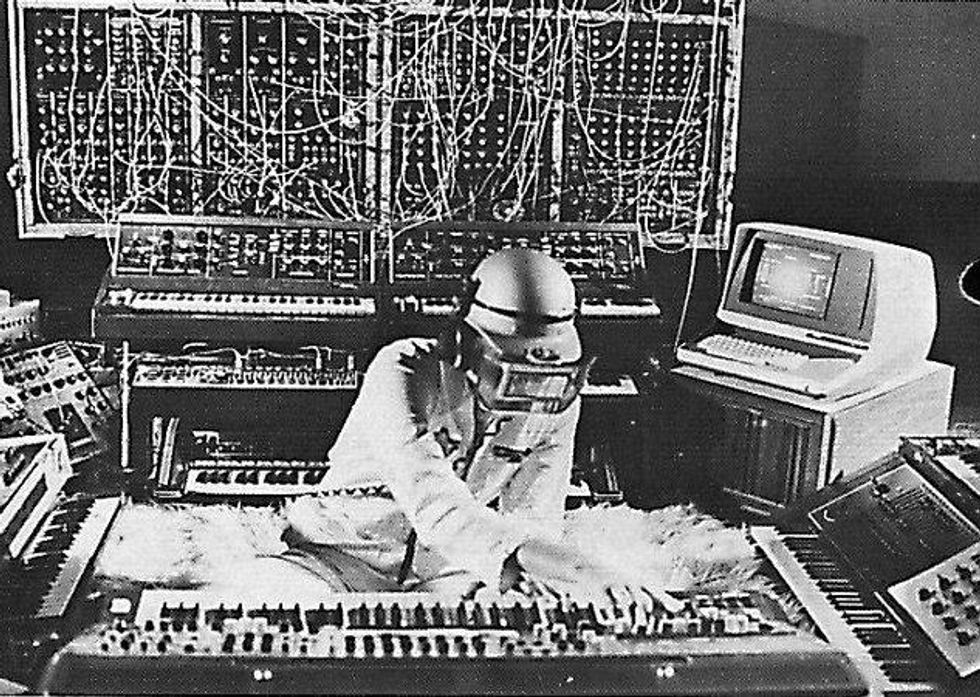Travel & Nightlife
Germany's New Wave Industrial Rock Complex

A 42 track playlist of Germany's native sounds.
May 20 2013 12:43 PM EST
February 05 2015 9:27 PM EST
By continuing to use our site, you agree to our Private Policy and Terms of Use.


Gay men have to give a lot of thanks to Germany's musical heritage. It was there after all that Kabarett got its start, helping cement gay icon Marlene Dietrich's fame, giving us one of the first pro-lesbian anthems, "Wenn die beste Freundin," and inspiring Christopher Isherwood's Goodbye to Berlin, the book that would inspire the Cabaret musical franchise. But any aural historian knows Germany's real music boom came in the post-war period, after the nation was split in two between the West and the East.
It was in this environment that artists like Tangerine Dream and Kraftwerk began pioneering electronic music in the 1960s and 1970s, setting the foundations for trance music established by composer Klaus Schulze (briefly a member of Tangerine Dream) and for the international stardom Klaus Nomi achieved in the mid-late 1970s. It was also in this period that so-called Krautrockers like The Puhdys stormed the scene.
New Wave soon followed, allowing Nena to release their 1983 hit "99 Luftballons." The lesser-known band the Dissidents also aided in turning German music into a political statement with their "world beat" sound, a development that informed the German industrial metal led by the likes of The Scorpions and Rammstein. There's even a rich hip-hop history in Germany, thanks to the likes of Die Fantastischen Vier. The fall of the Berlin Wall unleashed a torrent of sounds ranging from the punk sounds of the Beatsteaks to Stereo Total's lo-fi pop to the house-inspired stylings of Milk & Sugar. Poppy favorites Klee and Annett Louisan have since followed.
These post-war, post-wall all-stars are all here, in a 42 track playlist we're calling "Achtung!"
If you don't have Spotify, download for free today. It's more fabulous than Germany's famous efficiency.
Want more breaking equality news & trending entertainment stories?
Check out our NEW 24/7 streaming service: the Advocate Channel!
Download the Advocate Channel App for your mobile phone and your favorite streaming device!